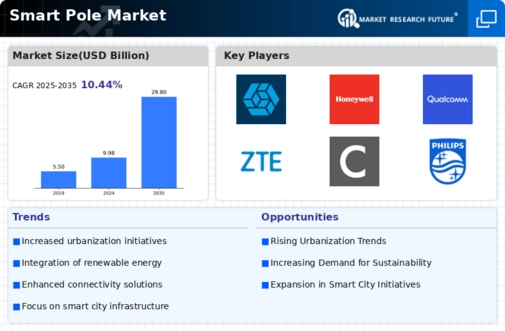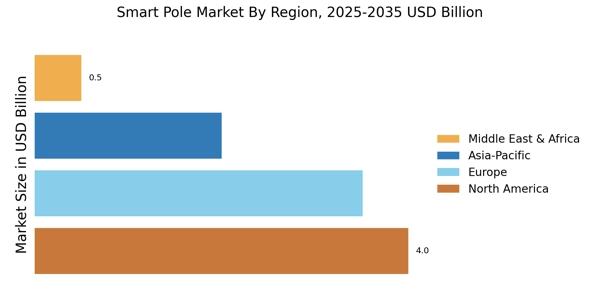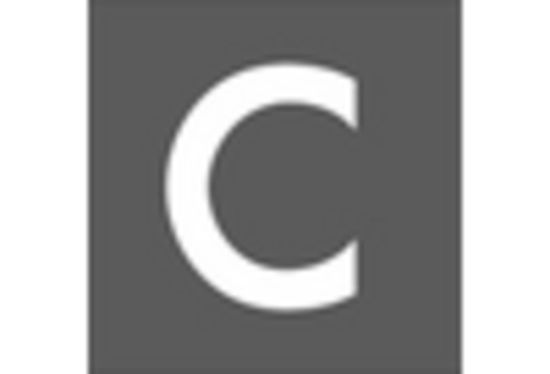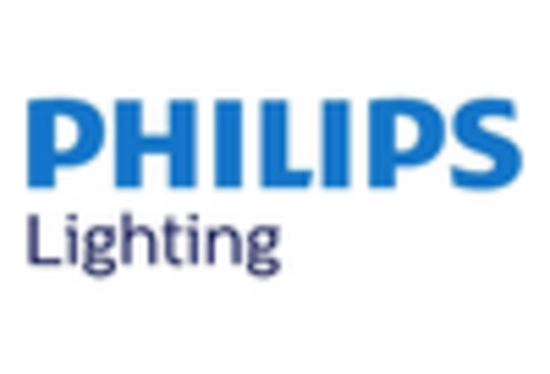Sustainability Initiatives
Sustainability is becoming a cornerstone of urban development, significantly influencing the Smart Pole Market. Smart poles often incorporate renewable energy sources, such as solar panels, which reduce reliance on traditional power grids. This shift towards sustainable energy solutions aligns with global efforts to combat climate change. As cities strive to meet sustainability goals, the adoption of smart poles is likely to increase. Reports suggest that municipalities investing in smart infrastructure can expect a reduction in energy costs by up to 30%. This financial incentive, coupled with environmental benefits, positions smart poles as a viable solution for future urban landscapes.
Integration of Smart Technologies
The Smart Pole Market is experiencing a notable shift towards the integration of advanced technologies. Smart poles, equipped with sensors and communication devices, facilitate the collection of real-time data. This data can be utilized for various applications, including traffic management and environmental monitoring. The increasing demand for smart city solutions is driving this trend, as municipalities seek to enhance urban living conditions. According to recent estimates, the smart pole segment is projected to grow at a compound annual growth rate of approximately 20% over the next five years. This growth is indicative of the rising interest in smart infrastructure, which is essential for modern urban planning.
Government Initiatives and Funding
Government initiatives play a pivotal role in the growth of the Smart Pole Market. Various governments are increasingly recognizing the importance of smart infrastructure in enhancing urban living. Funding programs and incentives aimed at promoting smart city projects are becoming more prevalent. These initiatives often include financial support for the installation of smart poles, which can significantly reduce the initial investment burden on municipalities. Recent data indicates that government funding for smart city projects is expected to reach billions in the next few years. This financial backing is likely to accelerate the adoption of smart poles, further solidifying their position in urban development.
Focus on Public Safety and Security
Public safety concerns are increasingly shaping the Smart Pole Market. Smart poles equipped with surveillance cameras and emergency response systems enhance security in urban areas. As cities grapple with rising crime rates, the implementation of smart poles is seen as a proactive measure to improve safety. The market for smart poles is projected to benefit from this focus, with estimates indicating a potential increase in demand by 25% over the next few years. This trend reflects a broader societal shift towards prioritizing safety and security in public spaces, making smart poles an integral part of urban infrastructure.
Enhanced Connectivity and IoT Applications
The proliferation of the Internet of Things (IoT) is a driving force in the Smart Pole Market. Smart poles serve as critical nodes in urban networks, providing connectivity for various IoT devices. This enhanced connectivity supports applications such as smart lighting, traffic monitoring, and public safety systems. The demand for seamless communication in urban environments is expected to propel the smart pole market forward. Industry analysts predict that the integration of IoT technologies within smart poles could lead to a market expansion of over 15% in the coming years. This trend underscores the importance of smart poles in creating interconnected urban ecosystems.

















Leave a Comment